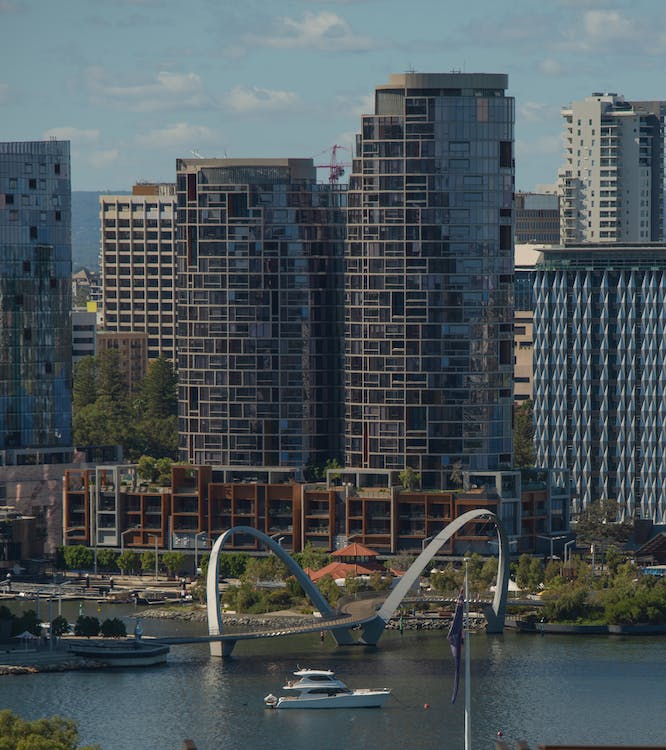Outdoor Living: How Life in Perth Compares to Texas Parks

Perth offers a Mediterranean climate with hot, dry summers and abundant sunshine, while many Texas parks face intense heat and humidity in summer. You'll enjoy Perth's uncrowded beaches and large urban parks compared with denser recreation in big Texas metros like Houston.
Perth emphasizes free, nature-forward experiences with strong transit access to green spaces, while Texas often calls for more budget planning for developed outdoor amenities. These environments shape different outdoor lifestyles that influence everything from daily routines to seasonal activities.
Climate Contrasts: Mediterranean vs. Southern Heat
How different can two outdoor experiences be? Perth's Mediterranean pattern brings hot, dry summers and mild, wetter winters; Houston's humid subtropical climate pairs heat with high humidity. Summer highs in Perth commonly reach the low 90s°F (low 30s°C) but feel more manageable thanks to low humidity and sea breezes, whereas Houston averages upper 80s to 90s°F with humidity that drives the heat index much higher.
Your seasonal habits shift accordingly. In Perth, winter's cooler, showery days still allow comfortable midday park visits. In Texas, summer often demands early-morning or evening outings, with shade, water features, and careful hydration planning.
The key difference: Perth typically enjoys more annual sunshine hours, while Houston's moisture-laden air makes peak-day activities genuinely uncomfortable without mitigation.
Population Density & Its Impact on Park Experience
Population patterns strongly shape park feel. Greater Perth has a lower overall density than inner Texas metros, creating a generally calmer experience on trails and beaches. You'll find expansive reserves with thriving native flora and generous open space for families (and dogs) to spread out.
By contrast, Texas urban parks—especially around Houston, Dallas, and Austin—accommodate higher visitor volumes with structured amenities, programming, and event spaces. The result isn't "better" or "worse," but a distinct difference in how you move through and share outdoor space.
The Cost Factor: Budgeting for Outdoor Recreation
Costs vary with your preferences. Texas State Parks typically charge modest day-use fees (with a popular annual pass option that pays for itself quickly if you visit often). City facilities may add fees for pavilions, rentals, or classes.
Perth's outdoor scene leans toward free or low-cost access—beaches, coastal paths, and major parks generally cost nothing to enter—so your primary "budgeting" may be for transport, sunscreen, and picnic gear.
For homeowners, both regions offer a spectrum of backyard upgrades (patios, shade structures, pools) with costs that range widely, from modest DIY projects to high-end custom builds.
Natural Landscapes: Beaches & Caves vs. Prairies & Forests
Perth pairs an Indian Ocean coastline with dozens of city-adjacent beaches—think Cottesloe and City Beach—plus limestone features, wildflower displays, and the vast Kings Park overlooking the Swan River. Nearby day trips add coastal cliffs, karst caves, and heathland trails.
Texas counters with prairies and savannas, Hill Country rivers and springs, Piney Woods forests, coastal wetlands, and desert vistas in the far west. From Big Thicket's biodiversity to Hill Country limestone canyons, Texas parks champion restoration of grasslands, riparian corridors, and coastal habitats—different conservation priorities than Perth's reef and dune systems.
Getting Around: Transportation to Green Spaces
Access shapes enjoyment. Perth's integrated Transperth network—especially the free CAT buses and frequent trunk routes—makes reaching Kings Park, riverside paths, and inner-metro reserves straightforward. Trains and ferries operate on standard fares, and bike-friendly paths link many neighborhoods to green corridors for a low-carbon approach to play.
In Texas, driving remains the default for most park trips, with transit and bike access improving in core cities. Planning usually includes parking logistics, water fill-ups, and heat-aware timing, particularly for families or large groups.
Year-Round Accessibility: Seasonal Variations
Perth's climate supports year-round outdoor time with fewer extreme-heat shutdowns. Even in summer, the dry heat and afternoon sea breeze can keep evenings pleasant. Texas parks push year-round access too, but heat waves and tropical weather can constrain midday plans. Many Texas sites now emphasize hydration stations, shade shelters, and seasonal programming (early hikes, night events) to keep access safe.
Both regions prioritize inclusive experiences, though emphasis differs: Perth leans on gentler grades and beach access solutions across all seasons; Texas layers in seasonal adaptations like sunrise programs, adapted fishing, and trail chairs where terrain and temperatures demand it.
Cultural Attitudes Toward Outdoor Living
Culture informs how people gather outside. Perth's outdoor rhythm reflects Noongar seasonal knowledge, beach-centric weekends, and a strong picnic and park culture under reliable sunshine. Community identity is reinforced by clean coastlines, barbecue nodes, and open lawns designed for relaxed socializing.
Texas expresses outdoor life through tailgates, river floats, backyard cookouts, and city-park festivals. In both places, outdoor culture is a social glue, but the climate and landscape nudge different rituals: beach mornings and sunset swims in Perth; shaded greenways, spring wildflowers, and evening concerts in Texas.
Conclusion
Both Perth and Texas offer compelling outdoor lifestyles shaped by climate, landscape, and culture. If you crave beachfront ease with reliable sunshine and transit-friendly park access, Perth fits naturally. If you're drawn to varied biomes—from prairies to desert canyons—and a robust park system that adapts to heat with smart amenities, Texas delivers. Consider budget, transport, and seasonal preferences to match your ideal outdoor life.




